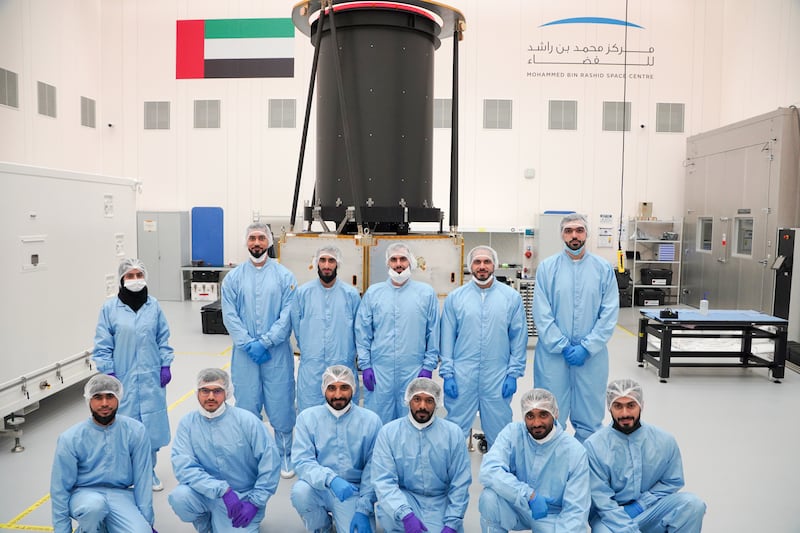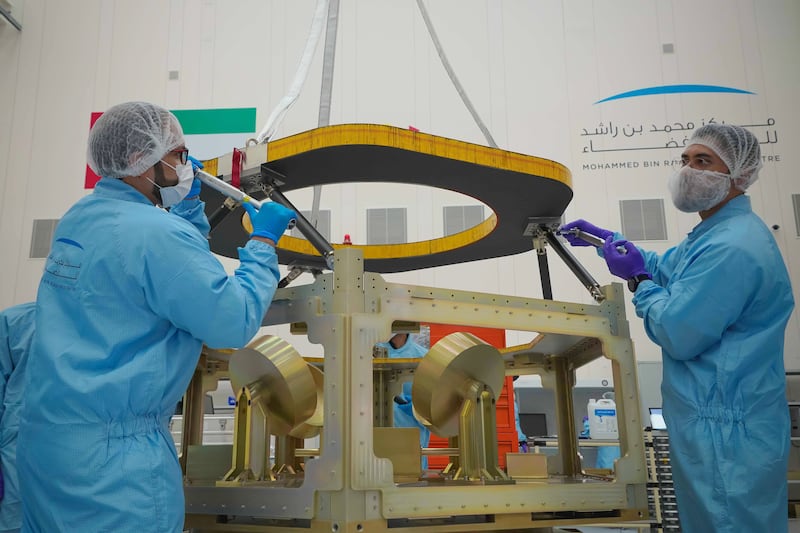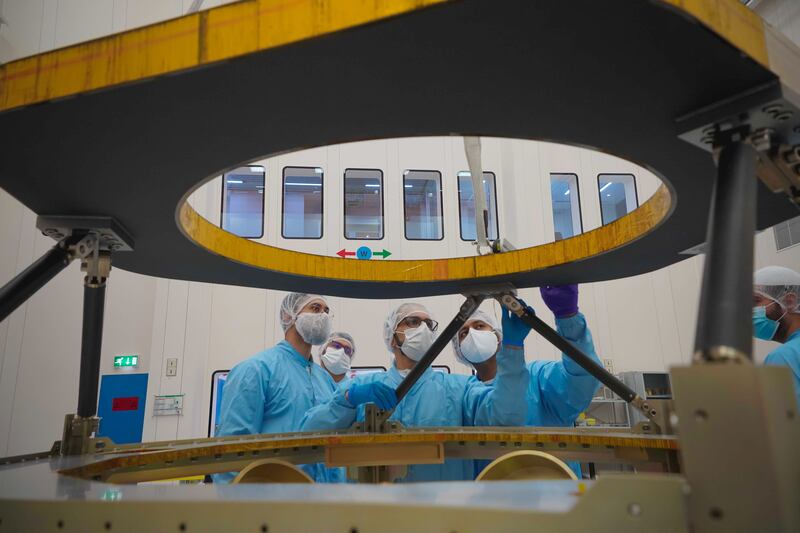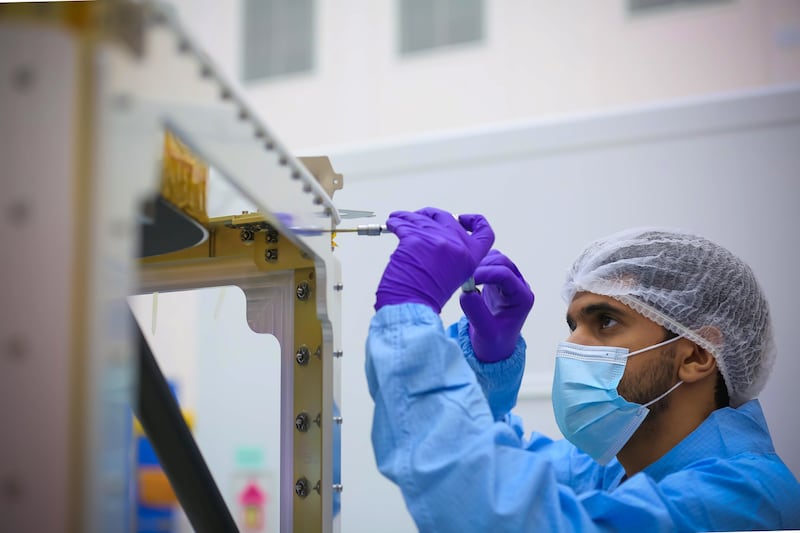Emirati engineers will start developing the final version of MBZ-Sat, the region’s most advanced imaging satellite.
The Mohammed bin Rashid Space Centre completed the critical design review and will begin building the flight model, the final version that will be launched into space.
The 800-kilogram satellite will be carried into orbit on a SpaceX ride-share mission, on board a Falcon 9 rocket, in 2023. It has been named after Sheikh Mohamed bin Zayed, Crown Prince of Abu Dhabi and Deputy Supreme Commander of the Armed Forces.
Salem Al Marri, director-general of the Space Centre, said the completion of the critical review design was a milestone.
“The team has done a remarkable job, illustrating the expertise, skill and capabilities of Emirati scientists and engineers,” he said.
"We are also proud to have the Emirati private sector involved in the development of the MBZ-Sat, helping to play a critical part in the progress of the project.
“We will now focus on the next stages of the mission, which promises to be yet another leap forward for the UAE’s space ambitions.”

The Space Centre is working with five private companies in the UAE to manufacture the satellite, including aerospace manufacturing company Strata, engineering solutions company EPI, management consultancy Rockford Xellerix, Halcon, a company that manufactures precision-guided systems and Falcon Group, an inventory management company.
The UAE hopes to support the local space industry through this mission, with 90 per cent of the mechanical and 50 per cent of the electronic modules for MBZ-Sat built in the Emirates.
This is the second Earth-observation satellite to be built entirely by Emirati engineers. The first was KhalifaSat, which has been operational since 2018.
The first UAE Earth-observation satellites were DubaiSat-1 and then DubaiSat-2, both built by Emiratis and South Koreans.
MBZ-Sat would be three times more efficient than KhalifaSat. It has a fully automated image scheduling and processing system that would allow it to produce 10 times more images than the Space Centre currently does.
The downlink data transmission speed is also three times more than the Space Centre’s current capacity.
Amer Al Sayegh, senior director of space engineering, said the satellite will have the UAE’s biggest telescope, with an advanced high-resolution camera that will take images from 500 kilometres above Earth’s surface.
“The critical design review for MBZ-Sat was conducted according to international standards and with the participation of over 100 engineers at MBRSC, in addition to international experts,” he said.
“The review confirmed the satellite’s readiness for the next phase, which is the development and manufacturing of the flight model that will be launched in 2023.”












